From the Trenches
The Prisoners of Richmond Castle
By JASON URBANUS
Monday, August 15, 2016
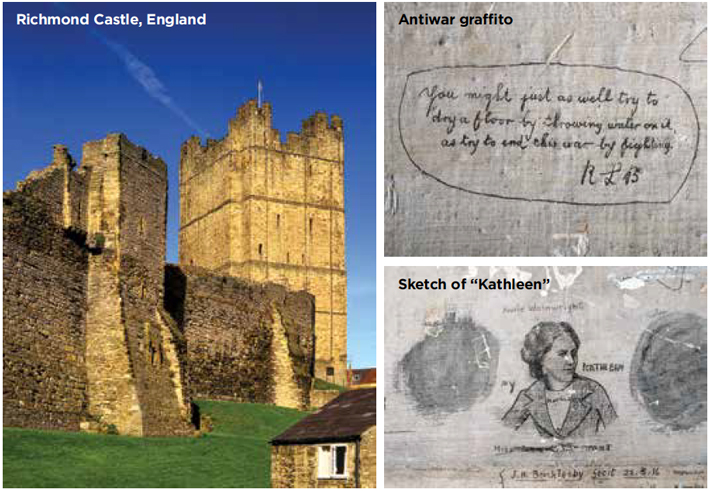
A new grant provided by England’s Heritage Lottery Fund will help preserve and document graffiti drawn by prisoners in North Yorkshire’s Richmond Castle during World War I. The imprisoned men were conscientious objectors who refused to serve in the British Army. In 1916, the British government passed the Military Service Act, which conscripted all unmarried men aged 18 to 41 into military service. The law stipulated that those who refused to enlist due to a conscientious objection could avoid combat, as long as they served within the Non-Combatant Corps. However, a small “absolutist” group of Methodists, Quakers, and socialists refused to participate in the war effort in any capacity, and were subsequently jailed in Richmond Castle. Known as the Richmond 16, these prisoners covered the walls of their cells with thousands of pencil-drawn images, political slogans, biblical quotes, and religious hymns. One statement reads, “You might just as well try to dry a floor by throwing water on it, as try to end this war by fighting.” Another states, “The working class of this country have no quarrel with the working class of Germany or any other country.”
After 100 years, the limewash and plaster walls have been heavily damaged by moisture, threatening the survival of the graffiti. “These graffiti are an important record of the voices of dissent during the First World War,” says Kate Mavor, English Heritage’s chief executive. “Now we can ensure that they survive for the next century and that the stories they tell are not lost.”
The Great Parallelogram
By DANIEL WEISS
Monday, August 15, 2016
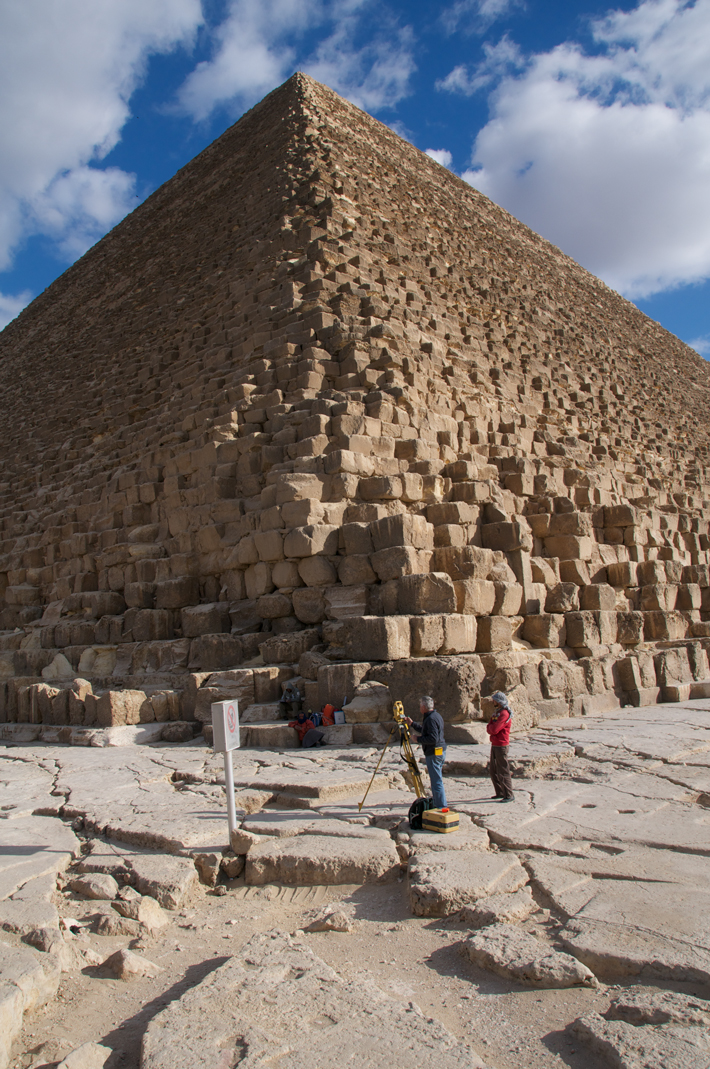 A new survey of the dimensions and orientation of ancient Egypt’s Great Pyramid of Giza has found that its builders attained a remarkable degree of accuracy despite limited technology. The 4,500-year-old pyramid is laid out with its sides running just one-fifteenth of a degree askew of the cardinal directions. In addition, each side of the pyramid’s original base measured around 756 feet long, but with the west side measuring about 2.9 inches longer than the east side, and the south side about 2.2 inches longer than the north side.
A new survey of the dimensions and orientation of ancient Egypt’s Great Pyramid of Giza has found that its builders attained a remarkable degree of accuracy despite limited technology. The 4,500-year-old pyramid is laid out with its sides running just one-fifteenth of a degree askew of the cardinal directions. In addition, each side of the pyramid’s original base measured around 756 feet long, but with the west side measuring about 2.9 inches longer than the east side, and the south side about 2.2 inches longer than the north side.
Estimating the pyramid’s initial dimensions is challenging given that it was originally clad in casing stones, almost all of which were repurposed as building materials several hundred years ago. Along the structure’s 3,000-plus-foot perimeter, only 177 feet of casing stones remain. To provide additional data, archaeologist Mark Lehner, director of Ancient Egypt Research Associates, looked for etched or cut lines at the pyramid’s base to indicate the location of its original edges. He found 84 such points, most of which are near the centers of the sides, with no evidence of the original corners remaining.
Glen Dash, an engineer and head of the Glen Dash Research Foundation, and his team used a statistical method known as linear regression analysis to estimate the full extent of the pyramid’s edges based on Lehner’s data points, resulting in the finding that the base is not quite square. “It is slightly a parallelogram,” says Dash, and this suggests its builders were better at measuring precise distances than they were at measuring precise right angles.
“We think they were simply using wood, rope, copper, and stone, and were still able to achieve this level of precision,” says Dash. These margins of error, he says, are similar to what one would find in most modern-day construction projects, although structures such as bridges and high rises are held to more exacting standards.
Mystery Buildings at Petra
By ZACH ZORICH
Monday, August 15, 2016
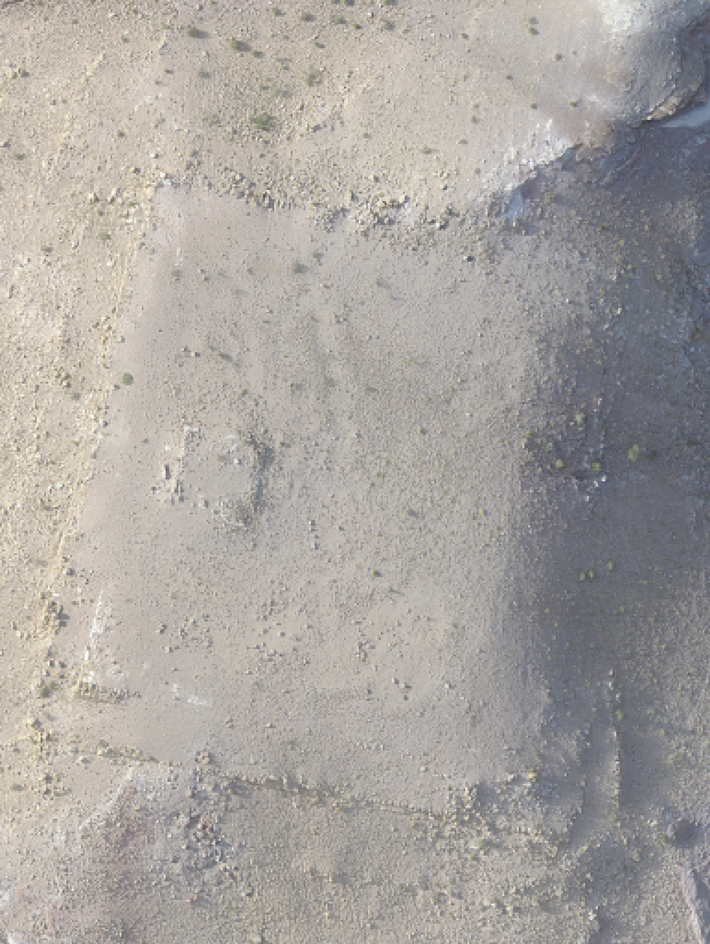 Satellite imagery and aerial photography have revealed several previously undocumented structures a little more than a mile southwest of Petra in Jordan, a major center of the Nabataean culture, famous for its elaborately decorated buildings carved into pink sandstone cliffs. The new survey, conducted by Sarah Parcak of the University of Alabama at Birmingham and Chris Tuttle of the Council of American Overseas Research Centers, shows clusters of previously unknown archaeological features, including remnants of two buildings and a trench that was dug by archaeologists in 1929 but whose location had been forgotten. Perhaps the most significant discovery is a 184-by-161-foot platform with a 28-foot-square building foundation atop it. Pottery sherds found there indicate that it was built before the second century B.C. Strangely, the platform is not in a place easily accessible from Petra’s city center. How it might have been used is a mystery.
Satellite imagery and aerial photography have revealed several previously undocumented structures a little more than a mile southwest of Petra in Jordan, a major center of the Nabataean culture, famous for its elaborately decorated buildings carved into pink sandstone cliffs. The new survey, conducted by Sarah Parcak of the University of Alabama at Birmingham and Chris Tuttle of the Council of American Overseas Research Centers, shows clusters of previously unknown archaeological features, including remnants of two buildings and a trench that was dug by archaeologists in 1929 but whose location had been forgotten. Perhaps the most significant discovery is a 184-by-161-foot platform with a 28-foot-square building foundation atop it. Pottery sherds found there indicate that it was built before the second century B.C. Strangely, the platform is not in a place easily accessible from Petra’s city center. How it might have been used is a mystery.
Sun and Moon
By ROSSELLA LORENZI
Monday, August 15, 2016
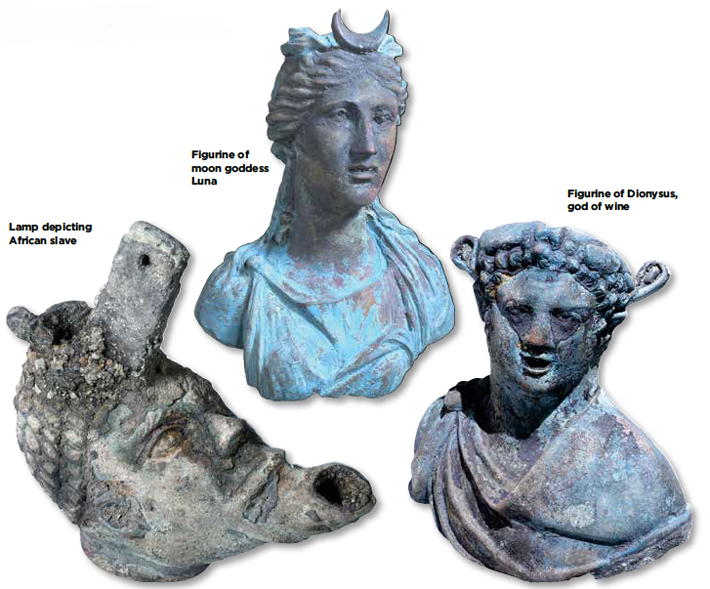
Treasures from the Roman era have emerged from the waters of the ancient Mediterranean harbor of Caesarea in Israel—the largest underwater find in the country in 30 years. The spectacular discovery includes a bronze lamp depicting the sun god Sol, a figurine of the moon goddess Luna, a lamp in the shape of the head of an African slave, fragments of three life-size bronze statues, and a figurine of the god of wine, Dionysus. The archaeologists also recovered two metallic lumps composed of thousands of coins bearing the images of the Roman emperors Constantine and Licinius, and holding the shape of the pottery vessels that once enclosed them. According to Jacob Sharvit, director of the Marine Archaeology Unit of the Israel Antiquities Authority, the cargo comes from what was probably a large merchant ship that sank around 1,600 years ago, and may have been slated to be recycled had the ship reached port. “The cargo gives us some important clues on commerce at that time,” he says. “We can date it to a short time after Constantine the Great won the battle against Maxentius, and made economic changes and declared Christianity the religion of the empire.”
Zapotec Power Rites
By ERIC A. POWELL
Monday, August 15, 2016
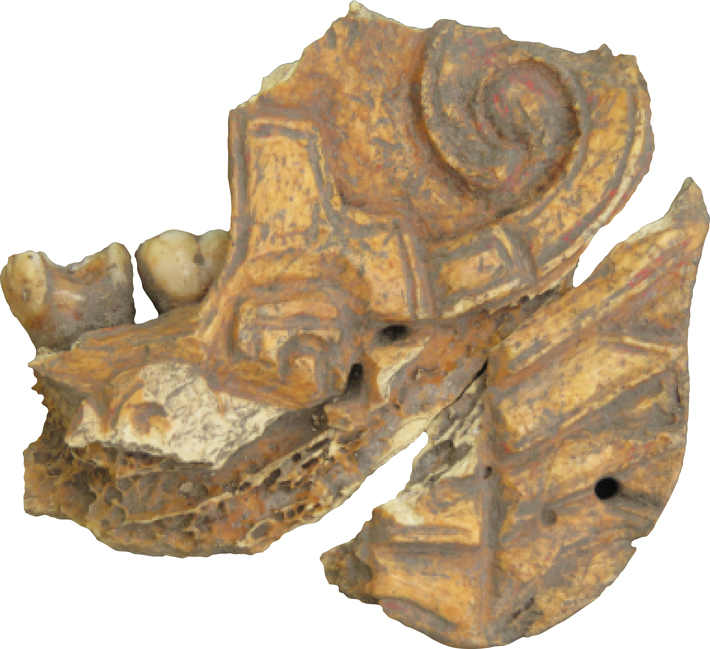 As early as 700 B.C., the Zapotec people of Mexico’s Oaxaca Valley were ruled by lords living in the city of Monte Albán who practiced public rituals that reinforced their vast power. But around A.D. 700, Monte Albán’s influence began to wane. Now archaeologists excavating at a wealthy residence at the site of Dainzú-Macuilxochitl have found evidence that, around that time, Zapotec nobles were practicing private rituals that celebrated their personal power. A team led by Field Museum archaeologist Ronald Faulseit unearthed a temple connected to a noble residence where they found two pierced human mandibles, one of them carved. The bones likely belonged to venerated ancestors and were worn as adornments during rituals that focused on the importance of hereditary power. “They were stressing their own noble lineage,” says Faulseit, “and emphasizing their political and economic independence.”
As early as 700 B.C., the Zapotec people of Mexico’s Oaxaca Valley were ruled by lords living in the city of Monte Albán who practiced public rituals that reinforced their vast power. But around A.D. 700, Monte Albán’s influence began to wane. Now archaeologists excavating at a wealthy residence at the site of Dainzú-Macuilxochitl have found evidence that, around that time, Zapotec nobles were practicing private rituals that celebrated their personal power. A team led by Field Museum archaeologist Ronald Faulseit unearthed a temple connected to a noble residence where they found two pierced human mandibles, one of them carved. The bones likely belonged to venerated ancestors and were worn as adornments during rituals that focused on the importance of hereditary power. “They were stressing their own noble lineage,” says Faulseit, “and emphasizing their political and economic independence.”
Advertisement
Advertisement
IN THIS ISSUE
Features
A New View of the Birthplace of the Olympics
Romans on the Bay of Naples
Worlds Within Us
Letter from Rotterdam
From the Trenches
Piecing Together a Plan of Ancient Rome
Off the Grid
Gimme Middle Paleolithic Shelter
Zapotec Power Rites
Mystery Buildings at Petra
Sun and Moon
The Great Parallelogram
The Prisoners of Richmond Castle
A True Viking Saga
Culture Clash
Lost and Found (Again)
The City That Wasn’t
Mask Metamorphosis
Advertisement

Recent Issues
-
 May/June 2024
May/June 2024
-
 March/April 2024
March/April 2024
-
 January/February 2024
January/February 2024
-
 November/December 2023
November/December 2023
-
 September/October 2023
September/October 2023
-
 July/August 2023
July/August 2023
-
 May/June 2023
May/June 2023
-
 March/April 2023
March/April 2023
-
 January/February 2023
January/February 2023
-
 November/December 2022
November/December 2022
-
 September/October 2022
September/October 2022
-
 July/August 2022
July/August 2022
-
 May/June 2022
May/June 2022
-
 March/April 2022
March/April 2022
-
 January/February 2022
January/February 2022
-
 November/December 2021
November/December 2021
-
 September/October 2021
September/October 2021
-
 July/August 2021
July/August 2021
-
 May/June 2021
May/June 2021
-
 March/April 2021
March/April 2021
-
 January/February 2021
January/February 2021
-
 November/December 2020
November/December 2020
-
 September/October 2020
September/October 2020
-
 July/August 2020
July/August 2020
-
 May/June 2020
May/June 2020
-
 March/April 2020
March/April 2020
-
 January/February 2020
January/February 2020
-
 November/December 2019
November/December 2019
-
 September/October 2019
September/October 2019
-
 July/August 2019
July/August 2019
-
 May/June 2019
May/June 2019
-
 March/April 2019
March/April 2019
-
 January/February 2019
January/February 2019
-
 November/December 2018
November/December 2018
-
 September/October 2018
September/October 2018
-
 July/August 2018
July/August 2018
-
 May/June 2018
May/June 2018
-
 March/April 2018
March/April 2018
-
 January/February 2018
January/February 2018
-
 November/December 2017
November/December 2017
-
 September/October 2017
September/October 2017
-
 July/August 2017
July/August 2017
-
 May/June 2017
May/June 2017
-
 March/April 2017
March/April 2017
-
 January/February 2017
January/February 2017
-
 November/December 2016
November/December 2016
-
 September/October 2016
September/October 2016
-
 July/August 2016
July/August 2016
-
 May/June 2016
May/June 2016
-
 March/April 2016
March/April 2016
-
 January/February 2016
January/February 2016
-
 November/December 2015
November/December 2015
-
 September/October 2015
September/October 2015
-
 July/August 2015
July/August 2015
-
 May/June 2015
May/June 2015
-
 March/April 2015
March/April 2015
-
 January/February 2015
January/February 2015
-
 November/December 2014
November/December 2014
-
 September/October 2014
September/October 2014
-
 July/August 2014
July/August 2014
-
 May/June 2014
May/June 2014
-
 March/April 2014
March/April 2014
-
 January/February 2014
January/February 2014
-
 November/December 2013
November/December 2013
-
 September/October 2013
September/October 2013
-
 July/August 2013
July/August 2013
-
 May/June 2013
May/June 2013
-
 March/April 2013
March/April 2013
-
 January/February 2013
January/February 2013
-
 November/December 2012
November/December 2012
-
 September/October 2012
September/October 2012
-
 July/August 2012
July/August 2012
-
 May/June 2012
May/June 2012
-
 March/April 2012
March/April 2012
-
 January/February 2012
January/February 2012
-
 November/December 2011
November/December 2011
-
 September/October 2011
September/October 2011
-
 July/August 2011
July/August 2011
-
 May/June 2011
May/June 2011
-
 March/April 2011
March/April 2011
-
 January/February 2011
January/February 2011
Advertisement






